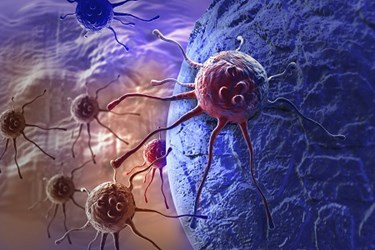Scientists Use Soil Bacteria To Kill, Shrink Tumors

Scientists from the Johns Hopkins Kimmel Cancer Center reported that a modified version of common soil bacteria injected into solid cancers attacked and shrank many of the tumors.
The scientists used the Clostridium novyi (C. novyi-NT) bacterium to produce a potent and precisely targeted response against tumors in rats, pet dogs, and a human patient. The microbe is commonly found in soil. An important characteristic of the microbe is that it thrives only in oxygen-poor environments, which made it a good candidate to target and destroy oxygen-deprived cells in tumor cores, which are difficult to attack with radiation and chemotherapy.
To use the microbe in the study as a therapeutic, the Johns Hopkins team removed one of the Clostridium novyi’s toxin-producing genes. They then directly injected the microbe spores into solid tumors in dogs. Three of the six tumors completely disappeared while tumors shrank in the others. The dogs experienced a bacterial infection while undergoing the treatment.
A human patient with cancer of the abdomen that had spread to other parts of her body also received the therapy to treat a metastatic tumor in her arm. The scientists injected the bacteria spores directly into the tumor. Similar to the animals, the patient experienced fever and severe pain in the area while her immune system responded to the infection. The scientists reported that afterwards, the tumor shrank significantly in and around her arm bone. However, other tumors continued to grow elsewhere in her body.
Dr. Shibin Zhou, associate professor of oncology at the Cancer Center, said, “One advantage of using bacteria to treat cancer is that you can modify these bacteria relatively easily, to equip them with other therapeutic agents, or make them less toxic as we have done here…Another good thing about using bacteria as a therapeutic agent is that once they’re infecting the tumor, they can induce a strong immune response against tumor cells themselves.”
The scientists published their findings in the journal Science Translational Medicine.
